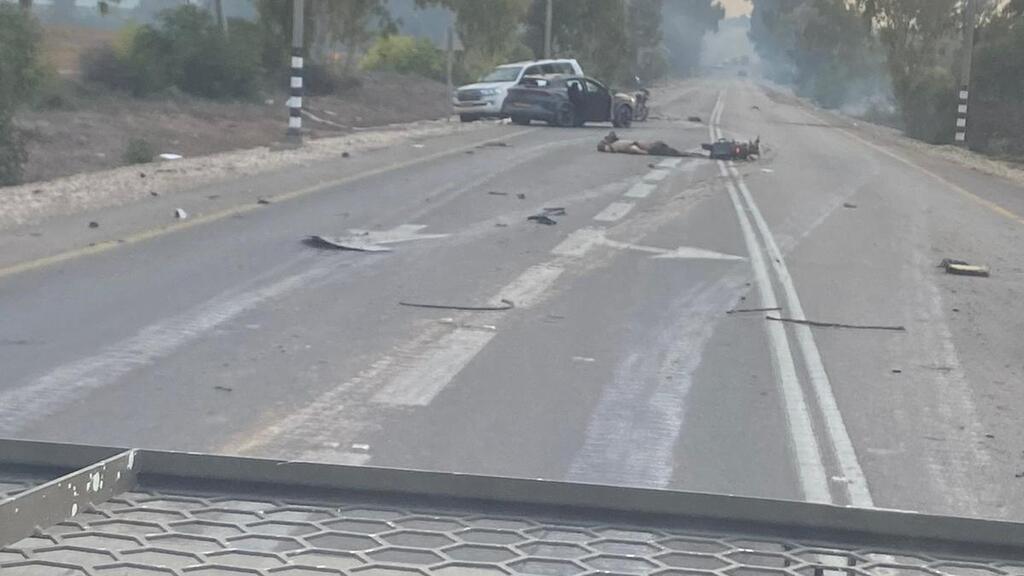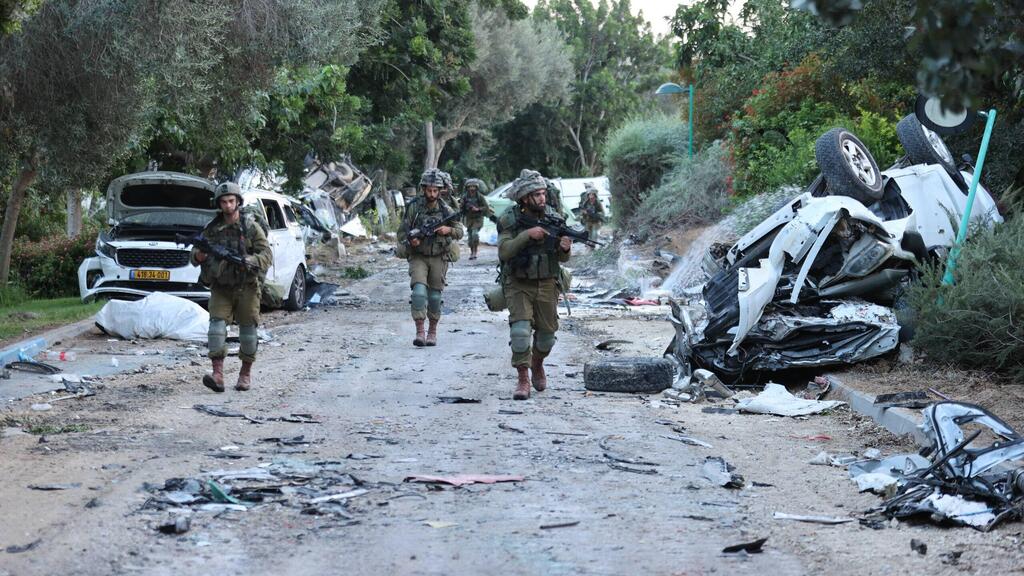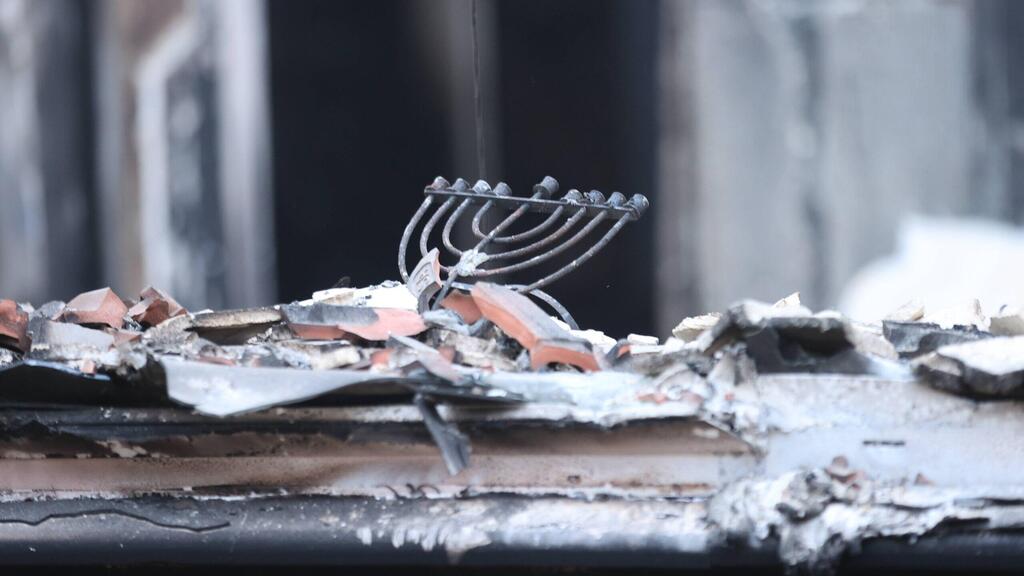Getting your Trinity Audio player ready...
Capt. A's battle in Kibbutz Be'eri on Oct. 7
Kibbutz Be’eri is one of the symbols of the October 7 massacre and of the military’s failure to protect its citizens. A dark cloud of questions regarding how the fighting was conducted amidst all the chaos, still hovers over the events of that morning. One hundred and one community members were murdered and 31 were kidnapped to the Gaza Strip. In the battles within the kibbutz, 19 IDF soldiers were killed, along with eight Israeli police officers.
This is the story of Capt. A., 444 Mobility Unit commander:
“On the morning of October 7, we were at the end of a week-long leave following a very intensive period in the army. I was woken by a phone call from my unit commander telling me there was a complex incident in the south, and that I needed to call up my company and get myself to the unit’s assembly point at Ze’elim. It was very early, and we didn’t yet understand what was going on.”
“I was on my way to the unit by 6:45, picking up soldiers along the way. We weren’t armed as our guns are stored when we’re on leave. So, we set out with kitchen knives. Our unit is in the Gaza border sector where mortars were falling, damaging our equipment and readiness for battle. In an effort to take control of the fire, I gathered a few soldiers, took two Sandcat Tigris armored vehicles, and set off.
“We used our instincts to get to Be’eri. We saw smoke from the kibbutz itself and heard a lot of automatic gunfire. In the afternoon, we were met with heavy fire when we tried getting in through the gate. So, we decided to go around the kibbutz and approach it from the south. But when we got there, our force encountered precision sniper fire. We spread ourselves out and returned fire. Two of our soldiers were wounded. We went in through the main gate anyway, as we knew that was the only point that somehow, the terrorists weren’t optimally prepared.”
“We advanced adjacent to the kibbutz’s surrounding northern fence and saw a vehicle go up in flames with a few bodies inside. I now know that was the security personnel who’d shown up at the kibbutz to provide a response. We then reached a junction and, for the first time, clearly saw the bodies of civilians. Bodies of women and children were lying there. We then started getting fired at from one of the houses on our right. We stormed the house where there were three terrorists whom we managed to neutralize. Sadly, the residents of that house were no longer alive.”
“The fighting that whole night was very intensive. At some stage, two Shaldag soldiers and I went to a relatively new neighborhood on the kibbutz, to a building on fire on its right-hand side. We started searching for survivors. We took cover behind a burnt-out vehicle and noticed a terrorist running toward us. We neutralized him and started walking in a kind of corridor between the wall and the house. We saw that they’d broken into the house through the saferoom window using gunfire and a powerful explosive device placed there. We broke down the window and the front door and got into the safe room where we found a woman’s body, with her family and a boy, who sadly had also been killed. Beside them was the wounded father writhing in pain, along with a girl who was also wounded.”
“We began providing medical response. We checked to see if the mother and boy could be saved, but their breathing and injuries were extremely severe. We put tourniquets on the girl and the two soldiers with me checked the father’s bleeding. He’d been hit twice by gunfire on the back. We took a chair. I’ll never forget that chair. It a was turquoise chair from the balcony. We lifted the girl and took her to the vehicle. She was a young girl with an enormous spirit. Her family had died before her eyes, her father was screaming in pain, and she was sitting there in silence, holding onto my hand. I told her, ‘Everything’s okay, everything’s okay. We’re getting you out now.’ She answered, ‘I know everything’s okay. Just take care of my father’. What a brave girl.”
“We put her in the vehicle and ran with the stretcher to bring out the father. Let’s just say, we had to stop for a while after that. There was a moment when everyone took a moment for themselves, to take it all in. We then rushed back, bringing out one family after the other.”
4 View gallery


Kibbutz Be'eri home, reduced to ruins by Hamas terrorists on October 7
(Photo: Tal Shahar)
“During the course of that day, Capt. A. and his company evacuated 130 members of Kibbutz Be’eri and 30 fallen IDF soldiers that they brought out of the inferno using BALNAM 444 (Operational Driving School) Unit armored vehicles. He was only replaced on Sunday afternoon. He then went to the unit to organize a company for continued activity.
“It wasn’t until I got there, that I noticed I was covered in blood. and that my equipment was ruined. By early evening, we’d done a quick equipment inventory, checked the machines and vehicles, and set out for the outpost sectors. We took part in activity cleansing the fence sector of terrorists who were still alive.”
“We were there at the fence sector for a week and a half, along with special forces. By then, we understood that there were hostages, and we started collecting evidence and testimonies. We cleared fallen IDF soldiers and the bodies of terrorists. That week was very intense. I think that was the hardest part for the soldiers. They were walking around with medical masks on their faces, collecting body parts in efforts to bring the soldiers and civilians back for burial in Israel.”
“We later went into Gaza and took part in the IDF ground operation. This was the first time the Eitan AFV had taken part in combat operations – and in enemy territory. With the Eitans, we evacuated 364 wounded during the fighting, sadly, along with the fallen. We’re still operating in Gaza.
“I was hard on myself at the start. I’m not routinely part of the defense array in the Gaza sector. And yet, I was very critical and tough on myself. Why wasn’t I there? How didn’t I know before? Could I have done anything better to save lives? With time, I have come to understand that I couldn’t have done anything differently, but that was with me all along the way, even in battle. That’s a commander’s job. At least that’s what I believe – interrogating yourself and always understanding what you can do better. Being better and providing better response.”
Get the Ynetnews app on your smartphone:








